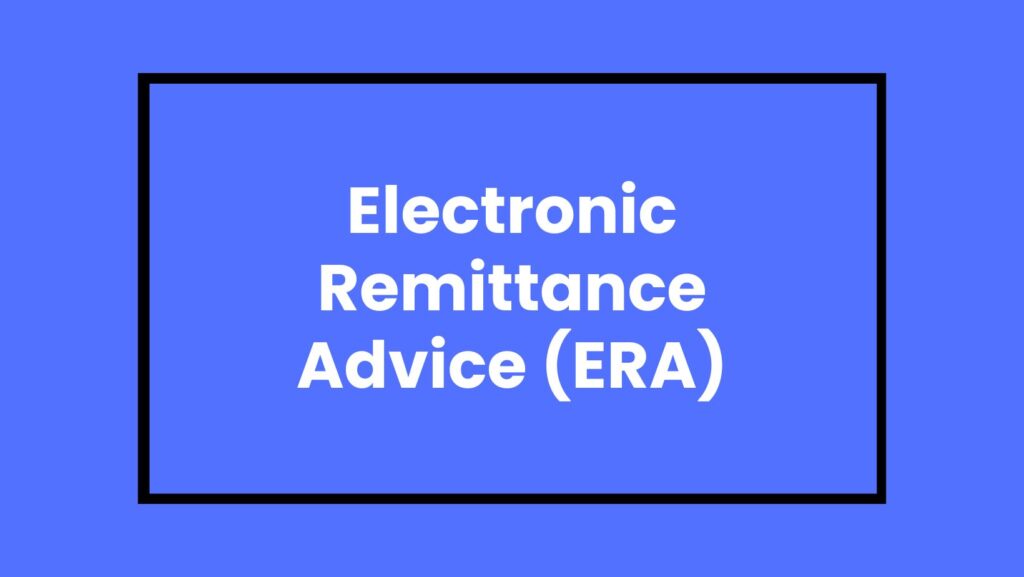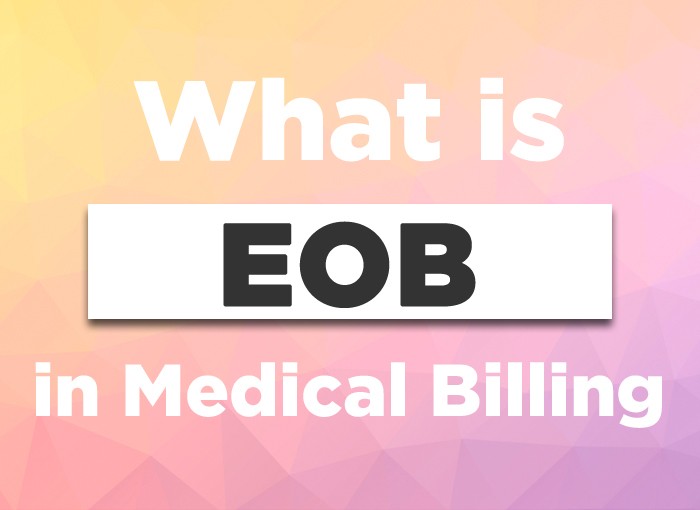In medical billing, it’s crucial to understand various documents that help healthcare providers manage payments and claims. Two key documents are the Electronic Remittance Advice (ERA) and the Explanation of Benefits (EOB). Both are essential for ensuring that healthcare providers receive accurate service payments. However, they serve different purposes and are generated in different ways. This blog post will break down the differences between ERA and EOB, making it easier for healthcare professionals, coders, and billing staff to address the complexities of medical billing.
What is an ERA?
An Electronic Remittance Advice (ERA) is a digital document sent by health insurance companies to healthcare providers. It contains details about claims that have been processed, including payment amounts, adjustments, and reasons for any denials. ERAs are transmitted electronically, which makes them faster and more efficient compared to paper documents.

Key Features of ERA
- Format: ERAs are typically formatted using standardized electronic data interchange (EDI) standards.
- Speed: Since they are sent electronically, ERAs reach providers much faster than traditional mail.
- Automation: Many billing systems can automatically import ERAs, simplifying the reconciliation process.
What is an EOB?
An Explanation of Benefits (EOB) is a paper document sent by insurance companies to policyholders after a medical claim has been processed. The EOB outlines what services were provided, what the insurance covered, and what the patient may still owe. Although EOBs are essential for patients to understand their benefits, they are less efficient than ERAs.

Key Features of EOB
- Format: EOBs are usually printed documents sent through the mail.
- Patient Communication: EOBs are designed for patients to understand their benefits and potential out-of-pocket costs.
- Details: They provide a summary of the claim, including the provider’s charges and any applicable deductibles or copayments.
Key Differences Between ERA and EOB
1. Purpose of ERA and EOB
The primary purpose of an Electronic Remittance Advice (ERA) is to provide healthcare providers with detailed information about the payment and processing of claims. This document helps providers understand how much they are being paid for specific services and any adjustments that have been made by the insurance company. ERAs play a crucial role in streamlining billing processes, allowing providers to reconcile their accounts accurately and efficiently.
In contrast, an Explanation of Benefits (EOB) is designed to inform patients about their insurance coverage and what they can expect to pay out of pocket. EOBs provide a summary of the services rendered, the amount billed, the amount covered by insurance, and any remaining balance due from the patient. This helps patients understand their financial responsibilities, making the billing process more transparent for them.
2. ERA and EOB Audience
ERAs are tailored specifically for healthcare providers, billing staff, and administrative personnel. These documents contain detailed information that professionals in the healthcare industry need to manage accounts, ensure accurate billing, and address any discrepancies. By providing precise payment details and adjustments, ERAs assist providers in maximizing their revenue and minimizing claim denials.
On the other hand, EOBs are intended for patients and policyholders. They are designed in a user-friendly format that allows patients to understand their benefits easily. This document serves as a communication tool between the insurer and the insured, helping patients to track their healthcare spending and understand the rationale behind their out-of-pocket costs. The clarity of EOBs can also empower patients to ask questions or challenge any discrepancies they might find.
3. Format of ERA and EOB
ERAs are electronic documents that are sent directly to healthcare providers through secure electronic channels. This format allows for the rapid transmission of information, eliminating delays associated with traditional mail. Additionally, the digital nature of ERAs supports easy integration with billing systems, which can automatically process the information without manual intervention.
Conversely, EOBs are typically printed documents that are mailed to patients after claims have been processed. This physical format can sometimes lead to delays, especially if the postal service is slow. The printed nature of EOBs may also result in challenges for patients who need to keep track of multiple documents, as they must physically store or file these papers for future reference.
4. Processing Speed of ERA vs EOB
One of the most significant advantages of ERAs is their speed. Since they are sent electronically, providers can receive ERAs almost instantly after claims are processed. This rapid delivery allows healthcare facilities to quickly reconcile accounts and adjust their billing practices accordingly. The immediate access to payment information can also lead to improved cash flow for providers, as they can act on the information sooner.
In contrast, EOBs often take longer to reach patients due to the traditional mailing process. Insurers may send EOBs on a scheduled basis, such as monthly or quarterly, which can create additional delays in patients receiving important financial information. This slower processing speed can result in confusion for patients, as they might not receive timely updates about their claims, leading to potential billing disputes or misunderstandings about their financial obligations.
5. Content Detail of ERA vs EOB
ERAs contain comprehensive information about the claims processed by the insurance company, including payment amounts, adjustments, and any denials. This level of detail is crucial for healthcare providers, as it enables them to understand the reasons behind payment amounts and to identify any necessary actions for follow-up or appeals. The detailed breakdown of each claim also assists providers in managing their finances more effectively.
EOBs, on the other hand, provide a summarized overview of the claims and do not go into the same level of detail as ERAs. While they do inform patients about what services were covered and what they owe, they lack specific information regarding payment adjustments and the rationale behind them. This difference can leave patients with unanswered questions about their bills and may require them to contact their provider or insurer for clarification.
6. Automation in ERA vs EOB
One of the significant benefits of ERAs is their ability to be seamlessly integrated into billing software. This automation allows healthcare providers to process payment information quickly and accurately, reducing the likelihood of human error. Automated systems can match ERAs to patient accounts, making it easier to identify discrepancies and manage claim follow-ups. As a result, the entire billing process becomes more efficient, allowing staff to focus on more complex tasks.
In contrast, EOBs often require manual entry into billing systems. This can be time-consuming and prone to errors, as staff must manually input data from each EOB into their systems. The manual processing of EOBs can lead to delays in accounts receivable and increase the workload for billing staff, making it more challenging to maintain accurate financial records and follow up on outstanding claims.
7. Payment Information Related to ERA vs EOB
ERAs include specific payment amounts made by the insurance company for each claim, along with any adjustments or denials. This detailed financial information is essential for healthcare providers, as it allows them to understand their revenue accurately and make necessary adjustments to their billing processes. By providing a clear picture of payments, ERAs help providers manage their cash flow effectively and address any issues that may arise.
EOBs do not include payment amounts or detailed financial data. Instead, they focus on informing patients about what services were covered and what their financial responsibility is. While this is important for patients, the lack of detailed payment information means that they may not fully understand how the insurance company arrived at the figures presented. This gap can create confusion, as patients may have questions about how much their provider was paid versus what they owe.
8. Claim Status via ERA vs EOB
ERAs provide critical information regarding the status of each claim, indicating whether it was approved, denied, or requires additional action. This real-time feedback is vital for healthcare providers, as it enables them to address issues promptly and ensure that they receive payment for their services. The ability to track claim statuses in real time helps providers optimize their billing practices and manage their revenue cycle more effectively.
EOBs summarize the outcome of claims but do not detail the specific adjustments or reasons for any denials. While EOBs can indicate whether a claim was approved or not, they often lack the comprehensive context needed for patients to understand the full picture. This may lead to frustration or confusion for patients who are trying to cover their healthcare bills, as they may not receive sufficient information to challenge any denials or errors.
9. Frequency of Issuance of ERA vs EOB
ERAs are issued for every processed claim, ensuring that healthcare providers have access to real-time information regarding their accounts. This frequent issuance allows providers to keep their billing practices up-to-date and make timely adjustments as needed. With ERAs arriving promptly after each claim is processed, providers can maintain an accurate overview of their revenue and quickly address any issues that arise.
In contrast, EOBs are often sent on a less frequent basis, such as monthly or quarterly, depending on the insurance company. This can lead to delays in patients receiving information about their claims, which may complicate their understanding of their financial responsibilities. The infrequent issuance of EOBs can create gaps in communication between insurers and patients, making it harder for patients to stay informed about their healthcare expenses.
10. Appeal Process of ERA vs EOB
ERAs contain specific information that can be essential for healthcare providers when appealing denied claims. The detailed breakdown of payments, adjustments, and reasons for denials provides a clear roadmap for what needs to be addressed in an appeal. This thorough documentation can streamline the appeals process, helping providers to gather the necessary evidence and respond effectively to insurers.
EOBs, while they do indicate whether a claim was denied, often lack the detailed information needed for effective appeals. Patients may find it challenging to address the appeal process based solely on the information provided in an EOB. Without sufficient context regarding the denial, patients may be unsure of how to proceed, making it important for both providers and patients to have access to ERAs for a more comprehensive understanding of the claims process.
Conclusion
Understanding the differences between Electronic Remittance Advice (ERA) and Explanation of Benefits (EOB) is essential for anyone involved in medical billing. While both documents play crucial roles in the claims process, their audiences, formats, and contents are distinct. By mastering the nuances of each, healthcare providers, coders, and billing staff can ensure smoother operations and better patient communication. Familiarity with ERAs and EOBs not only streamlines the billing process but also enhances financial clarity for both providers and patients. As the medical billing landscape continues to evolve, staying informed about these documents is more important than ever.
QZ Medx can be your go-to medical billing company for denial management and RCM. Contact us today to secure the booking.




